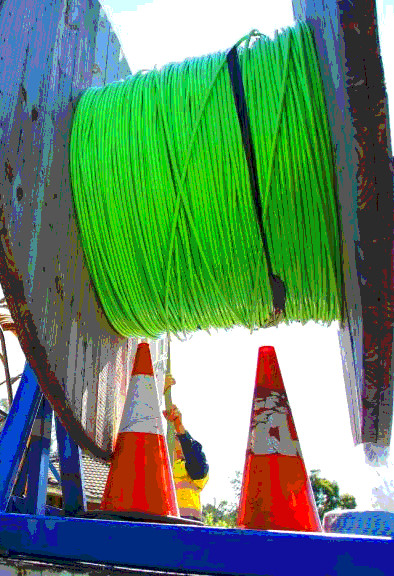NBN defends slow FTTN
 Official figures suggest only a quarter of NBN fibre-to-the-node connections can reach the claimed top speed.
Official figures suggest only a quarter of NBN fibre-to-the-node connections can reach the claimed top speed.
The Federal Government’s NBN plans include a mix of technologies including fibre-to-the-node (FTTN), where high-speed fibres are run to central points, from which copper wires are used to reach homes and businesses.
Figures provided to a Senate committee show just 24 per cent of FTTN connections are able to reach the 100 megabits per second top speed touted by the Government.
Industry experts say it is evidence of serious flaws in the design of the NBN, and warn that the technology will be obsolete within a few years of the network’s completion.
NBN Co says it is still an improvement for most Australians.
“Fibre-to-the-node is able to provide average wholesale download speeds of about 70Mbps. This is approximately 10 times faster than average ADSL speeds in Australia,” an NBN spokesperson told reporters this week.
“NBN's current plan is to get the network completed by 2020 with all premises able to access at least 25Mbps, and 90 per cent of the fixed-broadband footprint able to access speeds of 50Mbps.”
NBN has purchased over 16,000 kilometres of new copper cable, and claims most of that cable will be used for connections between existing pillars and new nodes.
Opposition communications spokesperson Michelle Rowland said the Government should not be relying on new copper.
“It's incredibly disappointing that the Government has arrogantly dismissed the pragmatic pathway recommended by the NBN Joint Parliamentary Standing Committee to deliver more fibre and less copper. This was an opportunity to find some middle ground,” she said.
“Malcolm Turnbull is not interested in solutions, he simply wants to sit back and watch the experience of consumers and the competitiveness of our digital economy languish under his second-rate copper NBN.”
Communications Minister Mitch Fifield says that not many people are buying the highest-speed plans.
“It's also important to note that in areas where 100Mbps speeds are available, fewer than one out of every five customers are choosing them,” Senator Fifield said in a statement.
“The majority (more than 80 per cent) are purchasing speeds of just 12Mbps or 25Mbps.”
NBN says it will make enough money from the currently planned network to be able to upgrade the network in the future.
“Once we have completed the network build and have 8 million premises connected to the network, we will be generating annual revenues of around $5 billion,” it said.
“This will give us a solid revenue base from which to fund future network upgrades for end-users that will enable higher speed services to be delivered without using further government funding.”








 Print
Print